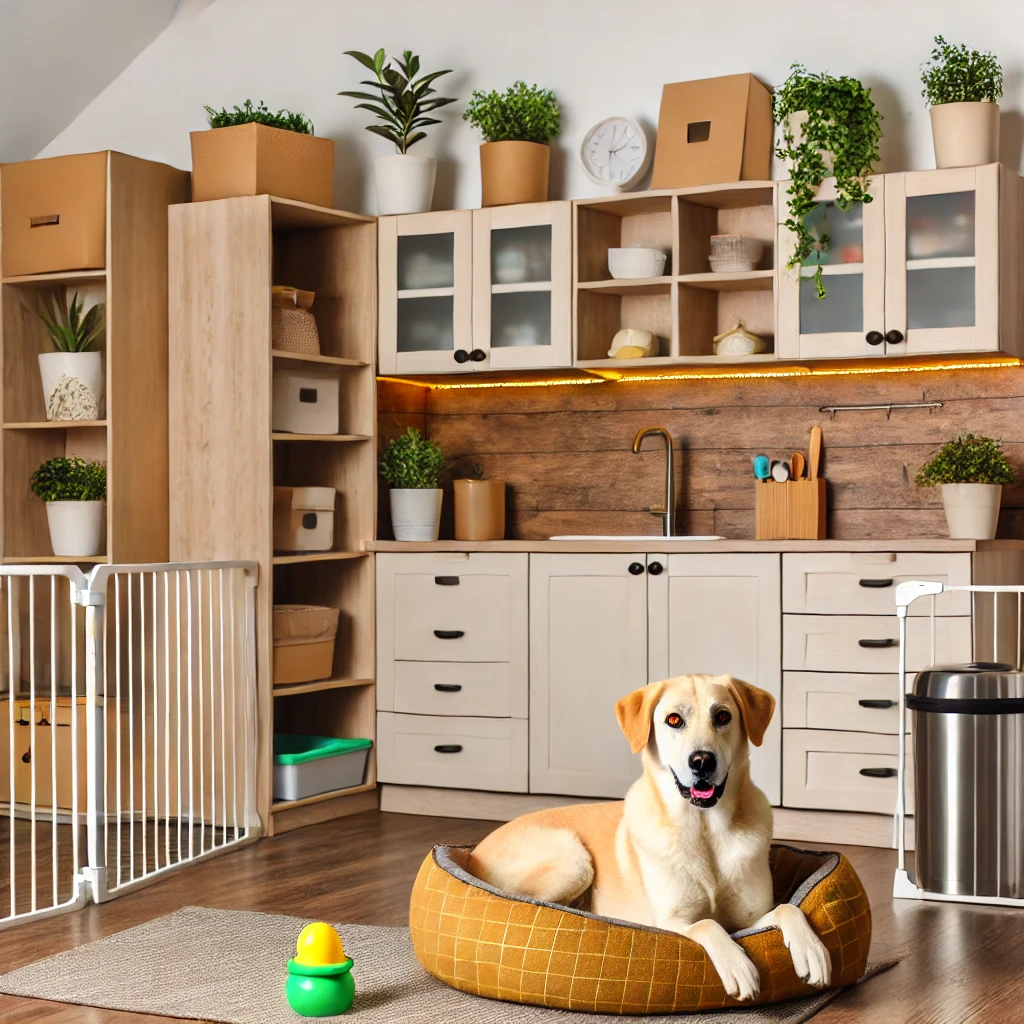Introduction
Bringing a dog into your home is a joy, but it also requires a few adjustments to make sure the environment is safe and welcoming. Pet-proofing your home not only protects your dog from potential hazards but also keeps your belongings safe from curious paws and teeth. This guide will walk you through essential steps to make your home as dog-friendly as possible.
1. Secure Hazardous Items
- Items like cleaning products, medications, and small objects can be dangerous if ingested. Keep these items locked away in cabinets or stored high up, out of your dog’s reach.
2. Protect Wires and Cords
- Dogs, especially puppies, love to chew on cords, which can be dangerous. Use cord covers or tuck them behind furniture to keep them out of reach.
3. Avoid Toxic Plants
- Certain plants, such as lilies, aloe, and philodendrons, are toxic to dogs. Choose pet-safe plants or place any harmful plants high enough that your dog can’t reach them.
4. Use Trash Can Lids
- Dogs are often tempted to rummage through trash for food scraps. Use trash cans with secure lids to prevent them from getting into potentially harmful foods or materials.
5. Install Baby Gates for Restricted Areas
- If you have rooms you don’t want your dog to enter, consider using baby gates. These are helpful for keeping dogs out of kitchens, bathrooms, or other restricted spaces.
6. Create a Safe, Cozy Space for Your Dog
- Set up a specific area with a comfortable dog bed, toys, and a blanket. This gives your dog a safe retreat to relax and rest.
7. Cover Sharp Edges
- Use edge protectors on sharp furniture corners, especially if you have a puppy who may bump into things. This helps prevent accidental injuries.
8. Keep Doors and Windows Secured
- Dogs can sometimes squeeze through partially open doors or windows, especially if something outside catches their attention. Install secure latches to prevent any accidental escapes.
9. Store Valuables Out of Reach
- Dogs can sometimes mistake items like shoes, books, or remote controls for chew toys. Keep anything of value stored away or on high shelves to avoid damage.
10. Use Non-Slip Rugs
- Non-slip rugs help prevent dogs from sliding on slick floors, reducing the risk of injury, especially for older dogs or those with joint issues.
Conclusion
Pet-proofing your home is a small effort that goes a long way in ensuring a safe, enjoyable environment for your dog. Following these tips will create a space that not only keeps your furry friend safe but also allows them to feel comfortable and at home.

